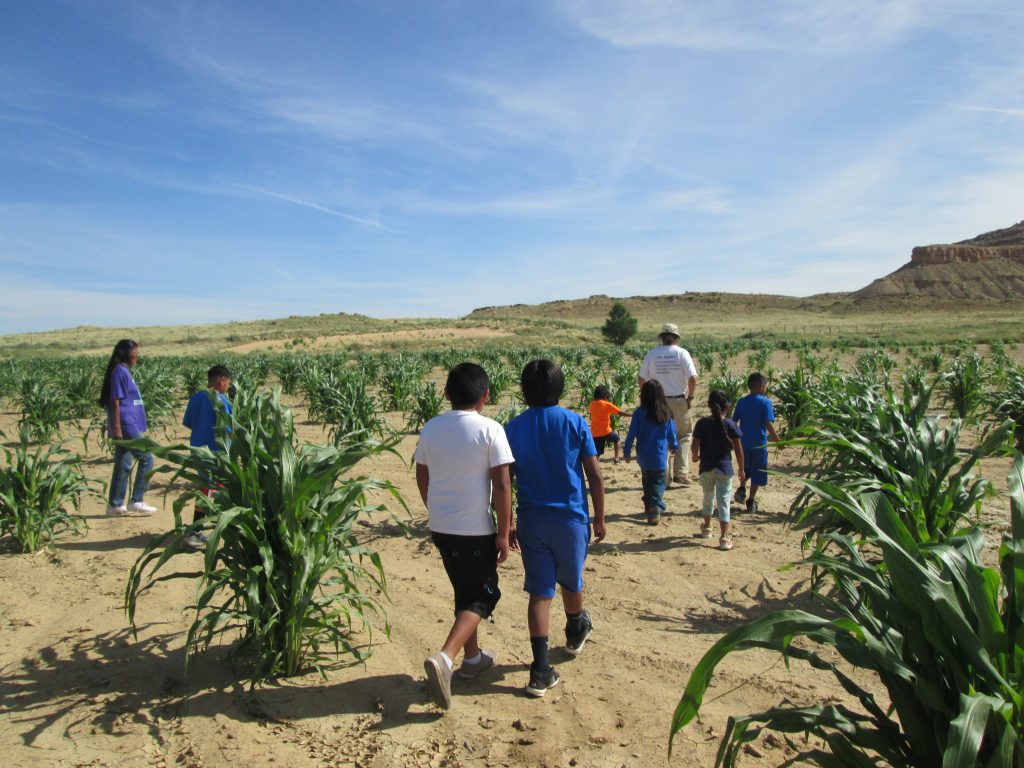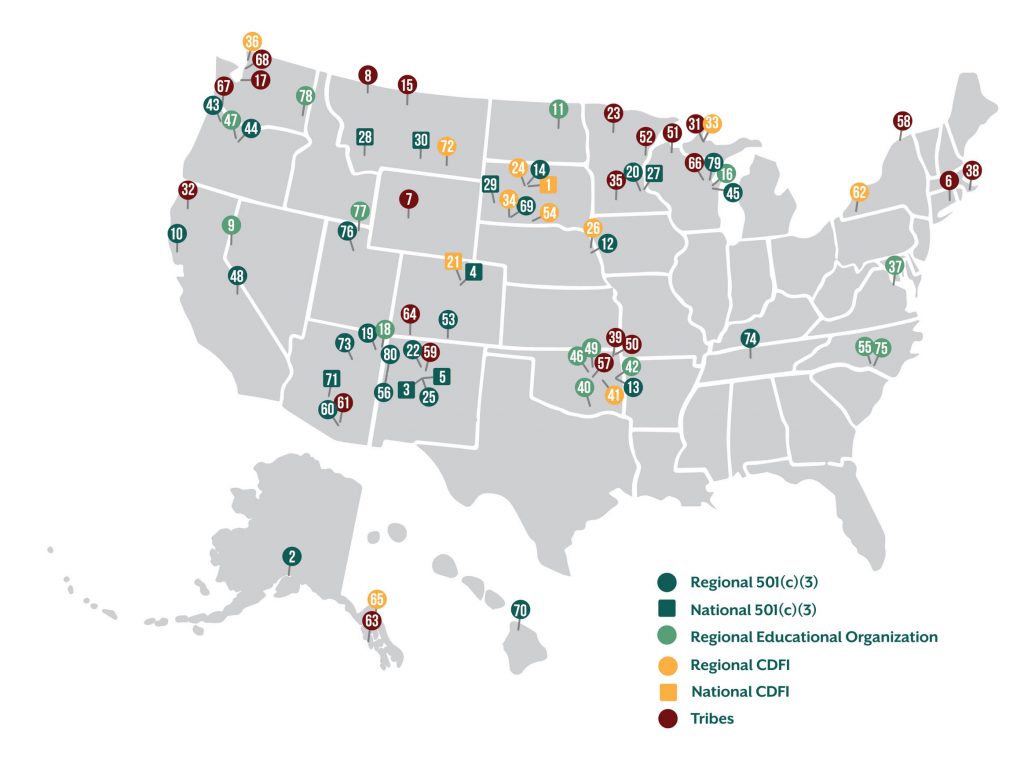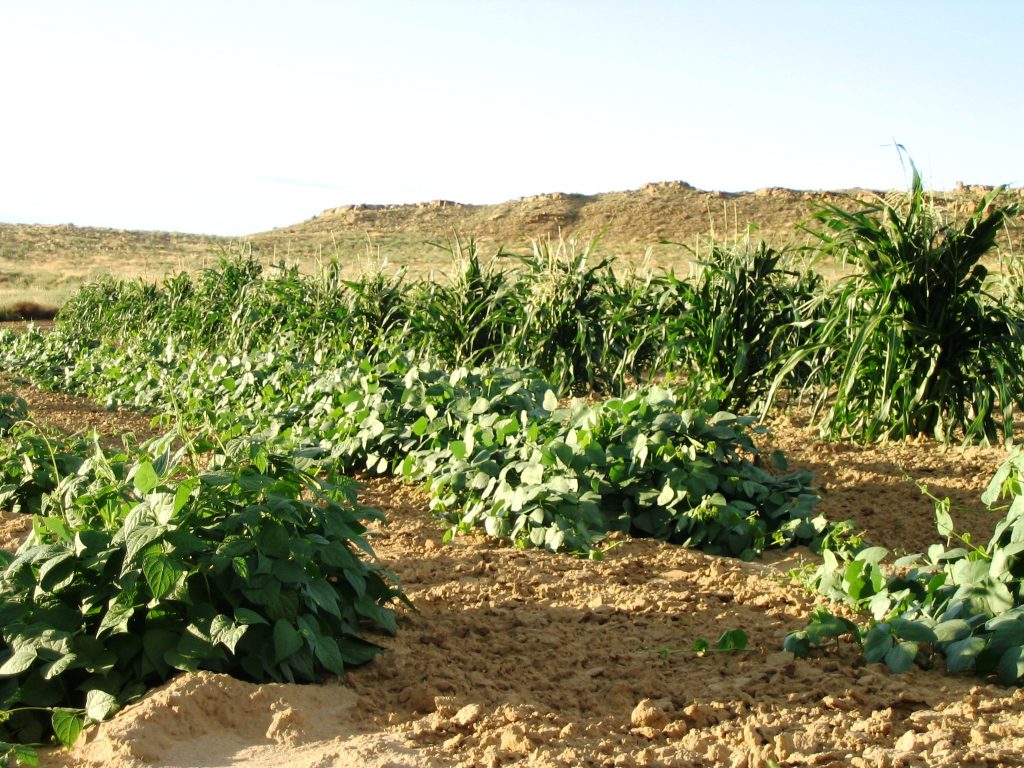The Native American Agriculture Fund is promoting food production in Indian Country after decades of discrimination by the USDA. Applications for the second round of grants due June 1.
By Melanie Lenart

As times got tough on their North Dakota ranch during the notoriously difficult 1980s, George and Marilyn Keepseagle did what many farmers and ranchers did: They went to their local federal office to seek assistance with loans to keep the family business going.
What they got instead was a lesson in frustration. No one told them about the Socially Disadvantaged Farmer program that could have helped them. No one would assist them with the extensive paperwork required to take out the low-interest loans available to most farmers. Even the loans they did manage to secure during the 1980s and 1990s came with restrictions that made it difficult to operate. The loan money went into “supervised” bank accounts, requiring them to drive nearly 20 miles to get a co-signature from a government official every time they wrote a check to cover operating expenses.
Their complaints to the USDA, and even the complaints made to the USDA on their behalf by officials from their tribe, the Standing Rock Sioux, were routinely ignored. To get by, they had to resort to selling off 380 acres of their ranchland. This left them with less than 500 acres of ranchland that had been in the family for generations, according to a 2008 court document known as the Eighth Amended Class Action Complaint.
It became clear to them that the services they received fell far short of what the same federal officials were providing to the white male farmers. And as they talked to other tribal members, they recognized the mistreatment as deliberate and systematic discrimination by officials from a USDA branch known as the Farmers Home Administration.
The FmHa provided low-interest loans and related assistance that, according to a 1979 USDA document, was supposed to go to “the people and communities with the greatest need.” Instead, congressional investigations carried out in the 1990s found that, since the late 1970s, agency workers were disproportionately funneling the billions of dollars at its disposal to white male farmers. That’s according to a 2008 court document that outlined the heinous treatment of the Keepseagles as well as other indigenous farmers in Montana, South Dakota, Oklahoma and North Dakota.
The FmHA also was taking about three times longer to process the loans they did provide to black, Hispanic, female and Native American farmers and ranchers. Timing matters in farming. In the Keepseagles’ case, one such delay led to them losing some grazing permits, even though the agency knew of the impending deadline.
The Keepseagles and other farmers sued the U.S. Department of Agriculture in 1999, “on behalf of themselves and all others similarly situated.” It took almost twenty yearsfor the settlement of this class-action lawsuit that became known as Keepseagle v. Vilsack. In the interim, farmers and ranchers continued to lose land and cattle.
By the time the Obama administration settled the suit in 2011, some of the farmers had passed on or lost track of the paperwork or perhaps lost the will to deal with the federal government. Whatever the reason, not all of the $760 million awarded in the settlement was claimed by individual farmers who had faced this discrimination.
In 2018, the courts approved the plan to distribute the remaining money, about $270 million, to groups serving Native Americans farmers and ranchers via the Native American Agriculture Fund. That money started flowing in December to indigenous farmers, with about $10 million earmarked for a wide variety of projects proposed by 82 different organizations, NAAF Executive Director and CEO Janie Hipp said during an April phone interview.
“This is a blessing that came out of some very horrible situations that should never have happened,” said Hipp, a lawyer and a member of the Chickasaw tribe. “It is not enough to actually address the needs that Indian communities have across the country to rebuild their food systems and to support their farmers and ranchers. It doesn’t even scratch the surface. But we will do everything we can to leverage that money with other foundations and with other parties to make it stretch and have it do as much as it can do.”

Now the NAAF awaits a second round of proposals, due June 1—as are requests for a two-week extension if needed for reasons related to the COVID-19 pandemic. The NAAF Board of Trustees takes a broad view of indigenous food production, Hipp said, including efforts serving tribal members in forestry, seafood operations and food sovereignty efforts as well as farming and ranching.
The latest round of funding will support projects in youth programming, traditional foods, food sovereignty, advocacy and agricultural extension. Although the legislation that guides the distribution of these funds restricts individual farmers and ranchers from applying, they can benefit from funds provided to Community Development Finance Institutions (CDFIs), non-profit groups and other tribal institutions, including tribal colleges and universities.
The 2019 funding supports half a dozen CDFIs that can finance individuals involved in food production, as well as projects supporting scholarships, community gardens and seed banks, research on industrial hemp, business ventures, and dozens of programs aiming to teach youth about indigenous agriculture. The breadth of activities shows up in the brief descriptions of the $2.4 million allocated for tribal colleges and universities and other institutions serving higher education needs of Native American students.
“It’s really an amazing time for the fund to become available,” Hipp said. “Food sovereignty and food systems repair and replenishment and revitalization are happening everywhere with every tribe right now. It’s as varied as we are,” she added, alluding to the diversity of America’s indigenous communities.
In the midst of this renewed interest in food sovereignty among tribes, the COVID-19 pandemic has put additional strains on farmers across the ethnic and economic spectrum. Growing food takes planning, preparation and continuous care—money invested in real time, for payoffs that occur months or years down the road.
“Now the consumers aren’t there anymore,” Hipp said. “Well, they’re there but they’ve gone home.” Many farmers rely on selling their products to restaurants, schools and other institutions, so the closing of these facilities had led some farmers to dump millions of gallons of milk or plough their ripened vegetable crop back into the ground.
“Most people don’t understand how difficult it is for a farmer to turn on a dime,” she added.
Hipp noted that the current situation reminds her of the challenges farmers faced during the 1980s, which she witnessed early in her career in agricultural law and policy, when many small farms went bankrupt as banks called in loans or refused to give them. As noted above, farms owned by minority groups, including Native Americans, took the hardest hit.
Now the NAAF is working with a variety of groups to encourage indigenous farmers and other food producers to get back on their feet or expand their existing businesses.
• • •
Michael Kotutwa Johnson, a postdoctoral research associate who helps manage some of the NAAF grants, said he is eager to help “upscale agricultural production in Indian Country.” As a Hopi farmer who earned a Ph.D. in natural resources from the University of Arizona last May, Johnson understands the challenges of farming on tribal lands—but also the power of it.
He learned farming from his grandfather as a youth. Even though he initially regretted having to spend his summers farming in Kykotsmovi Village, an isolated town of less than 1,000 residents, he later appreciated the mentoring so much that he moved back there to continue the tradition of Hopi farming. The site where he farms without irrigation, and where his ancestors farmed for millennia, typically receives maybe an inch of rain during the crucial growing months of July and August. Yet he gets crops every year, and sometimes bumper crops, from this meager moisture.

Johnson’s dissertation work included examining how a current USDA program known as EQIP (the Environmental Quality Incentives Program) had flaws that make it impossible for most Hopi farmers to take advantage of its benefits. An inspiring speaker, Johnson said he appreciates having the opportunity via his position with NAAF to help right some of these wrongs and to promote long-term food sovereignty among indigenous peoples.
He’s especially interested in projects with a business angle, he said, such as “to have their own value-added goods coming from the reservation that already have all that stuff in it, all the bells and whistles in it, so they can get the maximum price at the market.”
Selling the raw product will gain a farmer maybe one-seventh of the market dollar earned by the eventual product, he said. However, producers can “add value,” such as by cooking up dried beans and canning them, to raise their market share. Or ranchers can create dried jerkies from livestock raised, again capturing more of the market dollar with this value-added product.
In its first round of grants, the NAAF earmarked $75,000 to the Inter-Tribal Buffalo Council for value-added products that will help the tribes produce a revenue stream to support herd growth. Another $275,000 is allocated to the Intertribal Agriculture Council to formalize a process to connect Native producers with domestic market opportunities. Other ventures will help producers launch businesses or expand distribution to other tribally owned enterprises. The Suquamish tribe in Washington will even use the $75,000 provided via NAAF to buy a boat for harvesting oysters to diversify its seafood business. (The NAAF has posted summaries of programs supported in 2019.)
Johnson’s view of upscaling agriculture involves “getting more people involved—not necessarily having more land under production, but just getting more people involved in the process, at all the different stages.”
The current pandemic seems to be providing time or reasons for many people to garden or farm, as evidenced by a run on seeds reported by distributors such as Johnny’s Selected Seeds and the Arizona-based Native Seeds Search. “People being at home might inspire more people to grow food, and to make products,” Johnson said. “It takes so long to wait in line now, when they could have had it at home.”
• • •
Details on the Request for Proposals are posted on the Native American Agriculture Fund web site. Eligible grant recipients are non-profit organizations, educational organizations, tribal governments and their instrumentalities, and Community Development Financial Institutions. To register for upcoming webinars on the RFP or to view material from them, click here.
Links to additional information and background about the class action suit and the NAAF grants described in this article:
2008 court document, The Eight Amended Class Action Complaint:
https://www.clearinghouse.net/chDocs/public/FH-DC-0009-0001.pdf
1979 internal USDA Overview of the FmHA:
https://babel.hathitrust.org/cgi/ptid=umn.31951002860170g&view=1up&seq=4
2010 Associated Press article with background on the Keepseagles:
Summary of NAAF grant awardees for 2019:
To register for upcoming webinars with NAAF about grants:
https://nativeamericanagriculturefund.org/grants-webinar/
Melanie Lenart, Ph.D., is a regular contributor to Native Science Report. She has worked with tribal members on a variety of projects, including as a faculty member of Tohono O’odham Community College and as part of postdoctoral positions with the University of Arizona.
